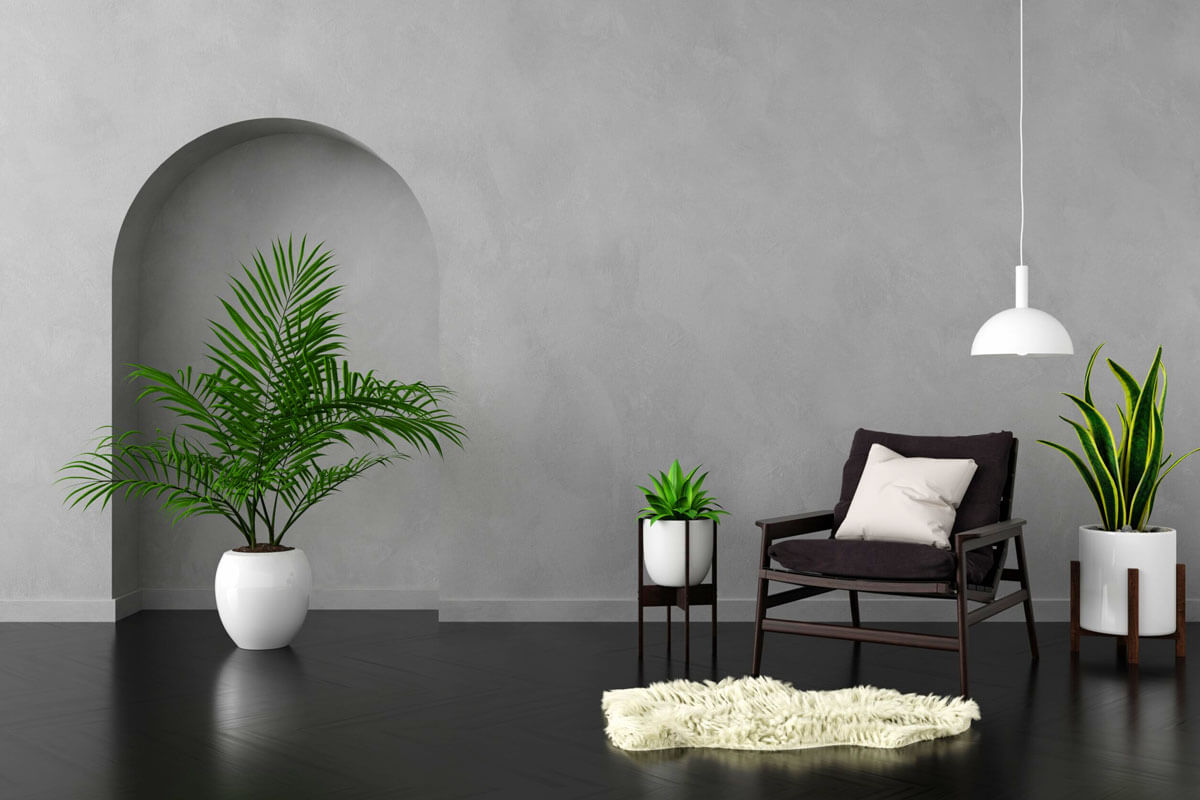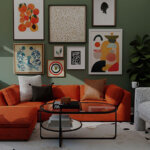Meaningful décor turns your space into a personal story by displaying objects that carry emotional value and memories. People in 2025 want spaces with soul and personal meaning rather than generic, trendy items, with designers noting clients seek “genuinely lived-in and loved” homes. You don’t need expensive art or designer pieces. You need items that spark joy and remind you of people, places, and moments that shaped your life. This guide shows you how to choose, display, and refresh décor that matters—an approach to intentional design that rejects cookie-cutter styling.
What Is Meaningful Décor?
Meaningful décor refers to home items that carry personal significance beyond their visual appeal.
These pieces tell your story through what designers call storytelling spaces—environments where every object has emotional resonance. A photo from your wedding. A quilt from your grandmother. A pottery bowl you made in a class last summer. The personalized home decor market is growing at 7.2% annually and is expected to reach $330.6 billion by 2034. This growth shows people want homes that reflect who they are, moving away from impersonal design that lacks character. Sentimental objects create emotional connections that mass-produced items can’t match. They spark memories every time you walk past them.
You can find meaningful items anywhere. They don’t need to cost money. Sometimes the best pieces are free—a shell from your beach trip or your child’s first drawing. What matters is the story behind each object and how it makes you feel. The French word “décor” evolved from “décorer” (to decorate), but modern home styling goes deeper than surface decoration—it’s about creating authentic environments.
How to Identify What Matters to You
Start with a meaning audit to find items worth displaying.
Walk through your domestic environment and open drawers, closets, and storage boxes. Pull out items that make you pause or smile. Customers increasingly seek unique and personalized home décor that reflects their individual style. Write down which objects spark strong feelings. Group them by category: family photos, travel mementos, gifts, handmade items, or heirlooms. This purposeful decorating process helps you separate truly meaningful pieces from generic clutter. Not everything needs to go on display. Choose pieces that feel authentic to you right now.
Ask yourself three questions about each item. Does this object represent a person I love or a moment I treasure? Do I enjoy looking at it, or does it sit in a box? Will this item matter to me in five years? If the answer to all three is yes, it belongs in your curated keepsakes collection.
Categories Worth Considering
Personal décor falls into several groups. Heritage items like family recipes, old letters, or grandparent’s tools connect you to your roots and offer transgenerational meaning that passes through families. Travel souvenirs—maps, tickets, local crafts—remind you of adventures. Functional mementos like a favorite mug or blanket serve daily purposes while carrying memories. Handmade pieces from friends or your own creative work add warmth. Photos capture faces and moments you never want to forget. These decorative elements form the building blocks of meaningful home aesthetics.
Integrating Meaningful Décor into Your Home
Place meaningful items where you’ll see them daily through sentimental design principles.
Start with high-traffic rooms. The living room works well for a memory wall with framed photos or a shelf displaying travel finds. Bedrooms suit personal items like family portraits or wedding mementos. In 2025, the focus is on curating spaces with pieces that tell a story and resonate on a personal level, with handcrafted items bringing substance to interior layouts. Kitchens can showcase handmade pottery or your grandmother’s recipe box. Balance is key. Mix sentimental objects with your existing style so the room feels cohesive, not cluttered. This is the opposite of generic staging that creates showroom-perfect but soulless spaces.
Create focal points using display art techniques. Group three to five related items on a shelf or side table. A small gallery grouping on one wall looks intentional. Rotate items seasonally so your décor choices stay fresh. Designers emphasize thoughtful curation where special and bespoke decorative elements have meaning and a personal story. If you live in a small space, choose fewer pieces but display them prominently. One meaningful item on a clean surface makes more impact than ten crowded together.
Room-by-Room Strategies
Living rooms benefit from conversation starters within your decorative scheme. Place a unique travel find on the coffee table or hang a visual narrative above the couch. Bedrooms should feel intimate—display photos of loved ones or items from significant life moments through heritage styling. Bathrooms can hold spa-like accent pieces that feel both functional and special. Home offices work well for items that inspire you—quotes, awards, or mementos from career milestones. Hallways make perfect gallery walls where you can tell your story in chronological order through memory displays.
Modern & Sustainable Meaningful Décor
New technology and eco-friendly options expand what meaningful décor can be.
Digital photo frames in 2025 are fully-fledged smart displays with voice control, media streaming, and cloud integration. A digital frame on your shelf cycles through hundreds of photos without taking up space. Upload new images from your phone instantly. These frames connect to services like Google Photos and iCloud. Some models even let family members add photos remotely. Smart displays blend memories with daily function—showing your calendar, weather, and favorite moments on one screen. This modern approach to home curation balances technology with sentiment.
Sustainable home decor products are expected to represent 30% of the market by 2025, with reclaimed wood and upcycled materials becoming essential. Upcycled decor gives old items new purpose while supporting environmental values. Paint your grandmother’s chair in a modern color. Turn vintage bottles into vases. Frame fabric scraps from old quilts. Artisanal decor from local makers supports your community while adding unique meaningful touches. These pieces carry double meaning—your story plus the maker’s craft. They’re also legacy-focused, designed to last generations rather than follow fast-furniture trends.
Craftcore and Handmade Items
Searches for “dream thrift finds” surged 550% among Gen Z users, with designers noting growing appreciation for vintage materials that create spaces with soul. The craftcore trend celebrates handmade and artisanal objects. Visit flea markets or estate sales for one-of-a-kind finds. Commission a local artist to create something custom. Make your own pieces through DIY projects. Handmade items feel more personal than factory-made décor. They show effort and intention. A hand-knit blanket from your aunt means more than one from a big-box store. These items work within the broader field of interior design while maintaining individual character.
Maintaining and Refreshing Your Decor Over Time
Your meaningful items should change as your life changes.
Set a calendar reminder every three months to review your displayed items through the lens of interior stylists. Some pieces might feel less relevant. Others deserve to come out of storage. Home curation is an ongoing process, not a one-time project. Swap items based on seasons—beach finds in summer, holiday keepsakes in winter. This rotation keeps your space feeling current and prevents emotional overload from seeing the same items daily. It’s a dynamic decorative scheme that evolves with you.
Let go of items that no longer serve you. That gift from someone you’re no longer close to? It’s okay to remove it. Take a photo for your records if needed, then donate or store it. Curated art and handcrafted items should gradually expand over time, starting with one key piece central to your layout. Make space for new meaningful objects by releasing old ones. Your tastes and relationships change. Your décor should reflect your present, not just your past.
Creating Curation Cycles
Spring works well for family photos and fresh starts. Summer suits travel mementos and outdoor finds. Fall welcomes heritage items and cozy textiles. Winter highlights holiday traditions and year-end reflections. Rotate items in and out based on these natural cycles. Store off-season décor in labeled bins. This system keeps your displays fresh while honoring all your meaningful objects throughout the year.
Common Pitfalls and How to Avoid Them
Too much meaningful décor creates visual chaos.
The biggest mistake is displaying everything at once. Your great-aunt’s collection of 40 porcelain cats might have meaning, but showing them all overwhelms a room. Pick the best five and rotate the rest. 2025 design emphasizes comfort-driven spaces that provide shelter from daily stress, not cluttered environments. Leave empty space between items so each piece gets attention. A crowded shelf makes nothing stand out. Simplicity lets individual items shine.
Style clashes happen when meaningful items don’t match your aesthetic. You don’t need to abandon your sentimental objects or your residential design system. Frame mismatched items in coordinating frames. Group similar colors together even if objects are different styles. Use neutral backdrops to make eclectic items feel cohesive. Paint old furniture to match your palette. Small changes help meaningful pieces blend with your design without losing their story.
Budget and Sourcing Solutions
Meaningful décor doesn’t require spending money. You already own most items—they’re just hidden in storage. If you need frames or display furniture, shop secondhand stores first. Reclaimed and upcycled materials not only reduce waste but add unique character while saving money. DIY solutions cost less than buying new. Make your own shadow boxes using salvaged wood. Print photos at home instead of paying for professional framing. Ask family members for items they’d be willing to pass down. The best meaningful décor costs nothing but carries priceless memories.
Key Takeaways
Meaningful décor transforms houses into homes by showcasing your unique story through intentional design. Focus on curating spaces with pieces that resonate on a personal level, creating thoughtful environments where special elements have meaning and personal stories. Start small with a meaning audit to identify items worth displaying. Balance sentimental objects with good design by creating focal points and leaving breathing room. Use modern tools like digital frames and embrace sustainable upcycled pieces. Rotate your displays seasonally and let go of items that no longer serve you. The goal isn’t perfection—it’s creating a space that feels authentically yours, filled with objects that spark joy and preserve memories. This personal styling approach creates authentic, curated environments that reflect who you are rather than following trends.
*Footnote: “Meaningful Décor” as a specific phrase has limited formal coverage in interior design literature. This article draws on related concepts including personalized design, sentimental styling, and curated home aesthetics that share the same principles of creating spaces with personal significance.





